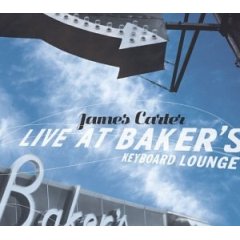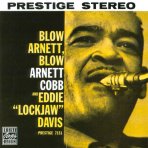Bel Canto e.One PRe3 Preamplifier
One of my favorite TV commercials (and there aren’t that many) is about a man who casually talks about all of the luxuries that he has in his life; the big house, the expensive car, and membership at the local country club. And after asking us viewers to guess how he’s able to afford all these things, he looks into the camera with a smile that barely masks his horrific reality and declares: “I’m in debt up to my eyeballs!” I doubt this is the spending behavior of tried and true audiophiles but sometimes when I see the price tags on some of the gear out there, I can’t help but think that even the most, well-heeled of audiophiles could be sent spiraling toward financial instability. But I just think about that commercial, chuckle a little and continue on about the business of listening to “reasonably” priced setups that have great sound. Fortunately, audiophiles who are not interested in a session with their local credit counselor can enjoy sensibly priced, beautifully built, and thoughtfully designed audio products from Bel Canto Design. John Stronczer, the chief designer, founder and president of the company, believes that he should design some of the best sounding music reproduction products that he can and offer his products to the consumer at competitive prices. One of those products – the Bel Canto PRe3 preamp – fits right in with that philosophy. Bel Canto Design has been around for a number of years now and is widely recognized as one of the best run manufacturers of high-end audio components. So I’ll skip the formalities and get on with this discussion about their latest preamp. Little Dynamo There are not a lot of switches, buttons or knobs to play with on the front panel except for one nicely sized rotary knob. This knob is somewhat simple to use and very unique in that it controls everything: standby mode, source selection, and volume control. The PRe3 uses a digital display and comes standard with a relatively easy to use remote that controls the aforementioned functions but also has a mute button. Later this summer a new remote control will be available so that the entire Bel Canto Design system can be controlled by a universal remote. There are no hardware changes that are required to facilitate the upgrade but a simple change to the preamp’s software is necessary. Also included with the new upgraded remote is the ability to turn off the display on the PRe3 because current generation units do not have a dimmer switch so it stays illuminated once it’s on. I found it interesting that the PRe3 has a green display especially since blue is the new “in” color. So I asked Mr. Stronczer why he decided on green and he said that for him it was easier to see. He also began to get Meta-Bio-Physical on me by also telling me that, “green is the easiest color for the eye to register. Something to do with evolution and chlorophyll in the environment.” Jokingly, I responded that my ancestors must have been closer to the ocean than the forest because I have a preference for a soft blue. The PRe3 is a fully balanced design with one set of balanced inputs and one set of balanced outputs. It also has a number of single-ended (RCA) jacks including a main out, tape out, and five sets of RCA inputs, with input number five specifically designed for home theatre bypass. Adhering to the less-is-more approach, the good folks at Bel Canto Design purposely left out a power switch for the PRe3, so when you plug it in the preamp stays powered up. The design goal for the PRe3 calls for a shortened signal path and the use of high quality passive and active components to minimize the effects of signal and power supply noise. The engineering staff also tries to reduce impedance, keep things simple, and feels that overall, their components should get out of the way of the music. As Martha Stewart would say, “that’s a good thing.” The review system In case you haven’t had a chance to hear or read about the Ref 1000s ($3,995) these amplifiers are very musical, with extended frequency extremes, and outstanding dynamics. I was able to secure a pair to hook up to the PRe3 courtesy of fellow Stereotimer Bill Wells. I primarily used Bel Cantos excellent CD-1 CD player for this review. The unit has the familiar looks of the other Bel Canto components but is larger at 18 inches wide. The CD-1 will soon be replaced by a newer model that is supposed to be housed in the same chassis as the PRe3 and Ref1000’s. Sonically it is a very transparent piece that got out of the way of the music and let me just tap my feet, snap my fingers and enjoy my music collection. I connected all of the Bel Canto gear together with Acoustic Zen Absolute balanced cabling. After a marginal break-in period I was ready to get down to business. Tune In While playing a number of familiar selections, the first thing that I found noteworthy is that the PRe3 excelled dynamically. I find that dynamics are not just the ability to transition from soft to loud passages or how hard you feel the whack from a bass drum but how well the music is conveyed. Not that the PRe3 doesn’t perform excellently in these areas because it does, but it’s the essence of how well you can feel the emotions and sentiments from the maestros and what they are trying to propose. No doubt with this preamp you can. With the PRe3 in the mix the instrumentals that I chose allowed the musicians to communicate with plenty of pizzazz and the singers sang with natural flow. Vocalists have warmth and presence and many times during my listening sessions I could really follow where they were going because the PRe3 does an excellent job of letting me hear exactly what they are saying and not feeling embarrassed later when I read the credits and find out that I substituted the wrong letter for a word which gave the song a totally different meaning. The PRe3 is a very musical preamp that is well balanced with strong bass and a top end that has excellent clarity and transparency. But what is so outstanding is the way that the music comes at you with wonderful pace and timing that I likened to the sounds and the experiences that I’ve had at the Green Mill, the quintessential Chicago jazz club where I can hear Patricia Barber or Kurt Elling on Monday or Wednesday nights for five dollars when they are not out on the road touring. The PRe3 doesn’t over romanticize or soften things up. It doesn’t provide you with so many details that you’ll keep reaching for more recordings as though you’re on a musical treasure hunt trying to unearth lost details, but instead allows you to hear the music with a lyrical vibe and musical vigor that I found similar to the attack and dynamics associated with the real thing.
Yet with all of the romanticism and dynamics, the PRe3 is also capable of extracting micro details from recordings. The PRe3 is extremely quiet and allowed me to detect the sound of an unfamiliar percussion instrument on track six, “This Kind of Life.” After hitting the repeat button on the CD player numerous times I finally realized that I would be better off looking at the CD cover to find out what kind of mystery instrument this might be. So I looked on the inside cover and I found out that Brad Dutz, the percussionist was using obsidian rock chimes. Obsidian rock chimes or wind chimes are made from obsidian, a volcanic rock. I’ve been to hundreds of live events and I can’t recall ever seeing or hearing a volcanic rock chime. I guess it’s time to schedule a trip to Hawaii. Simply Marvelous The PRe3’s signature qualities are its midrange presence along with a wonderful detailed presentation at both ends of the musical spectrum. The PRe3 did a great job of giving me a chance to hear minute details and intricate nuances, but is also provided me with a very musical presentation that filled my listening room with wonderful sonic memories. I found that with this preamp in the equation I had a great tool to evaluate other pieces of equipment, but it is also a great addition to plug into the system and sit back and enjoy the music for hours on end without getting absorbed with what the preamp is or isn’t doing. But then again, that is what the design staff at Bel Canto strives to accomplish, to “get out of the way of the music…” The Bel Canto Design PRe3 preamp is a marvelous feat of engineering at a price that will fit most audiophiles’ budget. As a matter of fact, since I didn’t have to take out a second mortgage to afford it and didn’t end up with debt up to my eyeballs I decided to purchase the demo unit to use as my reference preamplifier. I am also so overjoyed by the musical performance of the PRe3 that I feel compelled to recognize it for our publication’s highest accolade, the Most Wanted Component Award!
____________________ Specifications: Price: $1995.00 Manufacturer: Website: www.belcantodesign.com
|
Stereo Times Masthead
Publisher/Founder
Clement Perry
Editor
Dave Thomas
Senior Editors
Frank Alles, Mike Girardi, Key Kim, Russell Lichter, Terry London, Moreno Mitchell, Paul Szabady, Bill Wells, Mike Wright, Stephen Yan, and Rob Dockery
Current Contributors
David Abramson, Tim Barrall, Dave Allison, Ron Cook, Lewis Dardick, Dan Secula, Don Shaulis, Greg Simmons, Eric Teh, Greg Voth, Richard Willie, Ed Van Winkle, and Rob Dockery
Music Reviewers:
Carlos Sanchez, John Jonczyk, John Sprung and Russell Lichter
Site Management Clement Perry
Ad Designer: Martin Perry




 A good example of the PRe3’s dynamic prowess is on the outstanding jazz CD, James Carter Live at Baker’s Keyboard Lounge[Warner Brothers Records 48449-2]. James Carter is recognized as one of the “young guns” who plays a mean saxophone, whether it’s avant-garde or straight-head jazz. His blistering sound, wide open notes, and fast paced style are unleashed on two of my favorites, “Soul Street” and “Foot Pattin’”. On both cuts Carter’s able to fully unwind and express himself, and the PRe3 didn’t do anything on these selections to alter or diminish his tremendous youthful energy. The PRe3 is so transparent that it allowed Carter – whether on tenor or baritone sax – to reveal his tremendous power and talent with exceptional technical expertise and manual dexterity. It transformed what was already an impressive performance into a “Kodak moment” … in the music realm.
A good example of the PRe3’s dynamic prowess is on the outstanding jazz CD, James Carter Live at Baker’s Keyboard Lounge[Warner Brothers Records 48449-2]. James Carter is recognized as one of the “young guns” who plays a mean saxophone, whether it’s avant-garde or straight-head jazz. His blistering sound, wide open notes, and fast paced style are unleashed on two of my favorites, “Soul Street” and “Foot Pattin’”. On both cuts Carter’s able to fully unwind and express himself, and the PRe3 didn’t do anything on these selections to alter or diminish his tremendous youthful energy. The PRe3 is so transparent that it allowed Carter – whether on tenor or baritone sax – to reveal his tremendous power and talent with exceptional technical expertise and manual dexterity. It transformed what was already an impressive performance into a “Kodak moment” … in the music realm. Another fabulous saxophonist, but molded from slightly older clay, is relished patriarch and tenor sax man Arnette Cobb. He really gets down on “The EELY One” on Blow Arnette, Blow [Prestige OJCCD 794-2 P-7151]. Joining him on this lively blues tune is equally accomplished tenor Eddie “Lockjaw” Davis. There are not too many saxophone players that can play with the intensity and fervor of Cobb, but “Lockjaw” can hold his own. Accentuating the positive, Strethen Davis plays a mean organ and when he joins the two tenors, it is like the musical equivalent of a prized middle weight fight. This is a “battle royale” of two accomplished tenors that play with a bold, brazen, rustic sound and when channeled through the circuitry of the PRe3 the musicians seemed to come to life with an abundance of finesse and excitement.
Another fabulous saxophonist, but molded from slightly older clay, is relished patriarch and tenor sax man Arnette Cobb. He really gets down on “The EELY One” on Blow Arnette, Blow [Prestige OJCCD 794-2 P-7151]. Joining him on this lively blues tune is equally accomplished tenor Eddie “Lockjaw” Davis. There are not too many saxophone players that can play with the intensity and fervor of Cobb, but “Lockjaw” can hold his own. Accentuating the positive, Strethen Davis plays a mean organ and when he joins the two tenors, it is like the musical equivalent of a prized middle weight fight. This is a “battle royale” of two accomplished tenors that play with a bold, brazen, rustic sound and when channeled through the circuitry of the PRe3 the musicians seemed to come to life with an abundance of finesse and excitement.  The PRe3 also does vocals exceptionally well, and listening to pianist and songstress Jeanne Newhall on her latest release, Wild Blue [Blix Street G2-10086] is a shining moment. This is a CD about love and relationships and the PRe3 is just as adept at allowing the emotional content and intimate delicacy of songs to shine through. Jeanne Newhall has a passionate voice and all of her tender moments and romantic overtures on the piano kept me fixated during the performance from start to finish.
The PRe3 also does vocals exceptionally well, and listening to pianist and songstress Jeanne Newhall on her latest release, Wild Blue [Blix Street G2-10086] is a shining moment. This is a CD about love and relationships and the PRe3 is just as adept at allowing the emotional content and intimate delicacy of songs to shine through. Jeanne Newhall has a passionate voice and all of her tender moments and romantic overtures on the piano kept me fixated during the performance from start to finish. 



Be the first to comment on: Bel Canto e.One PRe3 Preamplifier